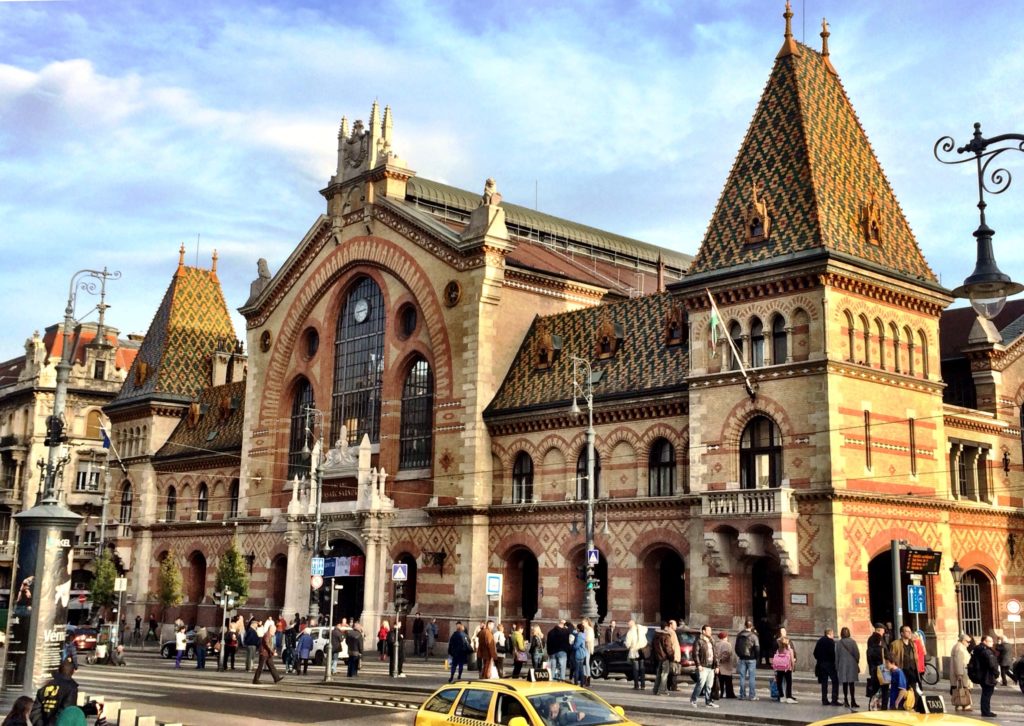
WHAT MAKES THE GREAT MARKET HALL IN BUDAPEST SO GREAT?
Budapest’s huge Central Market Hall, also known as the Great Market Hall, is the city’s largest indoor market. The beautiful historic structure attracts both local shoppers and tourists.
It is located at the end of the famous pedestrian shopping street Váci utca and on the Pest side of the Liberty bridge at Fővám square (Liberty Bridge is the third and shortest bridge of Budapest. It was built for the Millennium World Exhibition in 1896, its original name being Francis Joseph Bridge.)
Just prior to the turn of the twentieth century, when the cities of Buda, Pest, and Óbuda merged to form one, city leaders recognized a need for more and better market places for the burgeoning city. The decision was made to build covered markets similar to those in larger European cities, such as Paris.
Construction
Prior to the construction of the hall, a competition was held to determine the architect for this grand market. Samu Pecz, a Hungarian architect, was chosen and construction commenced in 1894. Unfortunately, just days before the 150-meter-long neo-Gothic hall was due to open in 1896, a fire destroyed a sizable portion of the roof, delaying opening until March of the following year. However, when it opened, it was declared among the finest and most modern covered markets on the continent.
The Market Hall
The cavernous structure was supported by slender steel columns, allowing for extensive sunlight to make its way into the market. The attractive outside facade was by Zsolnay, a Hungarian tile factory with an international reputation.
Sometimes referred to as “a symphony in iron”, this ornate market had a canal that ran through the center, allowing goods to be delivered to the market’s traders via barge. According to historic records, the early market was divided down the center by a thruway for wagons. Wholesalers were situated on the west and retailers on the east. There were also designated areas for meat traders, fish stalls, poultry stalls, and vegetable, fruit, cheese, and butter stands.
Budapest’s Central Market Hall was extensively damaged during World War II and in their haste to rebuild, contractors took short cuts and the newly reconstructed market lacked the splendor and strength of the original. It closed in 1991 after it was deemed hazardous and near collapse.
Rebuilding the Market
In the mid-1990s, the city government decided to restore this grand monument. Renovations were made to both the interior and exterior. The result was a clean, bright, colorful new market that serves the needs of the city’s residents and its many visitor. If you have a look at the building, the steel structure resembles a railway station, but do not be misled, it was built to be a market. The roof, decorated with its colorful Zsolnay porcelain tiling, makes it even even more spectacular.
Why Visit the Great Market Hall?
The Budapest Central Market Hall is the perfect place to get familiar with ordinary Hungarians and their gastronomy, as well as to get an insight into local life.
It is also the best place to buy authentic Hungarian delicacies such as Foie Gras (goose liver pate), paprika souvenirs in several version and packages, Hungarian salami, Tokaj (very sweet wine), Unikum (herbal aperitif) and Pálinka ( fruit based spirit).
Vendors are ready to give you a discount if you haggle, so feel free to get your best price.You will also find a food court with several coffee shops, a traditional Hungarian restaurant and Hungarian fast food stands offering authentic local meals such as sausages, langos (fried dough coated with sour cream or threaded cheese), goulash soup and főzelek (vegetable based stews).
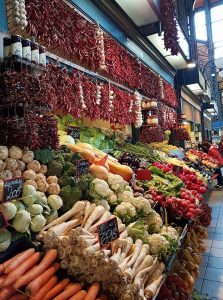
Best Time to Visit the Great Market Hall
You may wonder when it is the best time to visit the Great Market Hall. Definitely not on a Sunday, as, in contrast to shopping malls in Budapest, the modern markets of consumerism, Budapest market halls are not open on Sundays. The market is open from Monday to Saturday, so schedule your market tour by taking into consideration the current opening hours.
If you want to avoid the crowds, do not get up early to get to the market. Housewives, and market goer locals in general do their early morning shopping until about 8-9 am from Monday to Friday. It is especially true of Saturday mornings when many buyers have a bit more time to browse the markets on their free days. Moreover, Budapest weekend getaways are quite popular among tourists (local and foreign tourists alike), so Saturdays in general are busier.
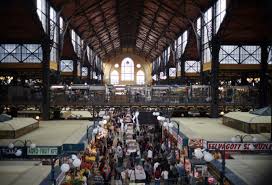
Unless you want to take photos of the busy market, you had better come late morning or early afternoon during the weekdays. Lunch time is the midday peak hours as many locals and tourists pop in for a quick, cheap lunch between 12 pm and 2 pm.
Tourists are advised to visit the Budapest Market Hall between 10 am and 12 pm or 2 pm and 4 pm as the best time to get the most out of your visit.
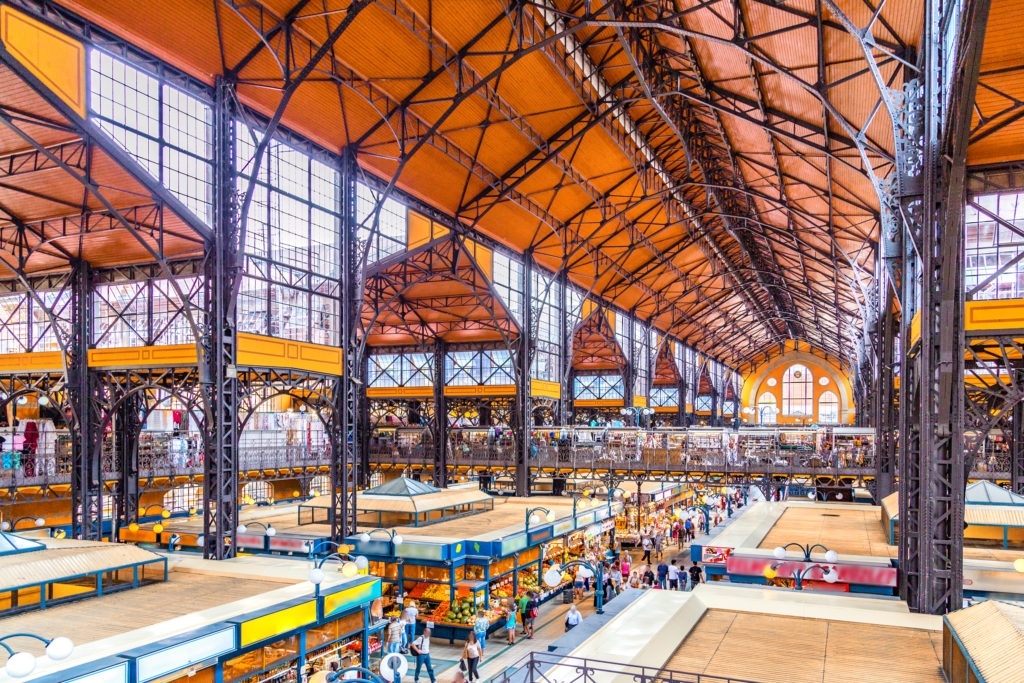
What To Buy and Try in the Central Market Hall?
We would especially recommend the juicy fruits, like peaches, apricots and sweet watermelons in summer, apples and plums in autumn. If you love cooking, you may be interested in trying some raw vegetables too, as the local Hungarian varieties taste and look differently. Unique Hungarian produce includes parsnip with a more characteristic, rooty taste, smaller heads of celeriac (again with a stronger character), smaller types of sweet or hot yellow peppers (half or third of the size of western red-yellow-green peppers), etc.
Drinks: if you love dessert wines, do try Tokaji Aszu for its lovely sweet flavors and wonderful fragrance. Unicum is a bitter liqueur that may require a couple of tastings to grow to like it. Many Hungarians love it, some hate it, a divider. Hungarian beers are cheap to buy at the food stalls.
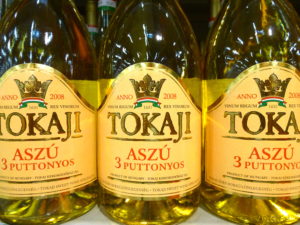
For Amazing Travel Insight and Tips: Check Out My Blog
Get Ted’s and Hacks On Into World Travel, Read These!
WHERE TO FIND EUROPE’S BEST CHEESE SOURCES ON A SMALL SHIP OCEAN OR RIVER CRUISE
HOW TO AVOID ADDED CURRENCY FEES WHEN TRAVELING ABROAD
RIVER CRUISING: TED’S ESSENTIAL PACKING TIPS
IS THE CRUISE LINE’S CUSTOM AIR WORTH IT?
Salamis: Hungarian salamis are high quality products, and there are many foreign tourists returning Hungary and going back for more salamis. Give it a try, if you are a meat eater. Mangalitsa salamis are special salamis made from the local furry pig meat (mangalica)
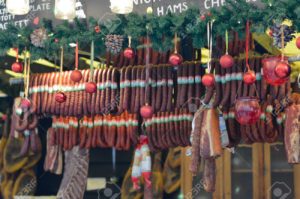
For Ted’s Travel tips and deals, join me on Facebook, Like My Page: CruisinWithTed
Pickles: Hungarians eat less raw salad, and eat more pickles along with the meaty main courses. Pickles are wonderful and varied in Hungary: try the sweet pickled gherkins, the pickled cabbages, the pickled stuffed peppers to get some idea about Hungarian pickles (savanyusag).
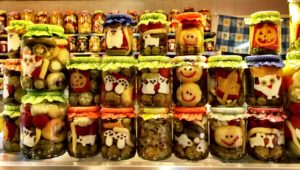
Paprika: it may be strange to try Hungarian paprika, but we recommend trying a bit of sweet Hungarian paprika at the Central Market Hall. Beautiful colour, rich sweet flavours, unlike in many of the stores you can get in western Europe or the US. Don’t take our word for it, give it a try. And take home some paprika for colouring dishes and adding a bit of sweet flavour for ragouts, stews and soups.
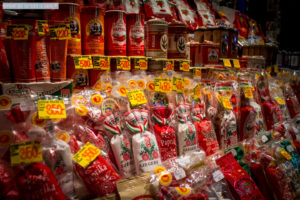
MAKE YOUR VIKING CRUISE A TRULY MEMORABLE EXPERIENCE FROM START TO FINISH
Enlist the Small-Ship and River Cruise Travel Expert, CruisinwithTed.com For Expert Advice And Receive Up To $500 pp In Non-Cash Amenities on new and existing travel bookings: Call Ted at 954-290-8626, email hello@cruisinwithTed.com, even if already booked, include your reservation number for a non-binding free incentives estimate. Sign up here today with your details and receive our exclusive luxury cruise specials and promotions: CruisinwithTed
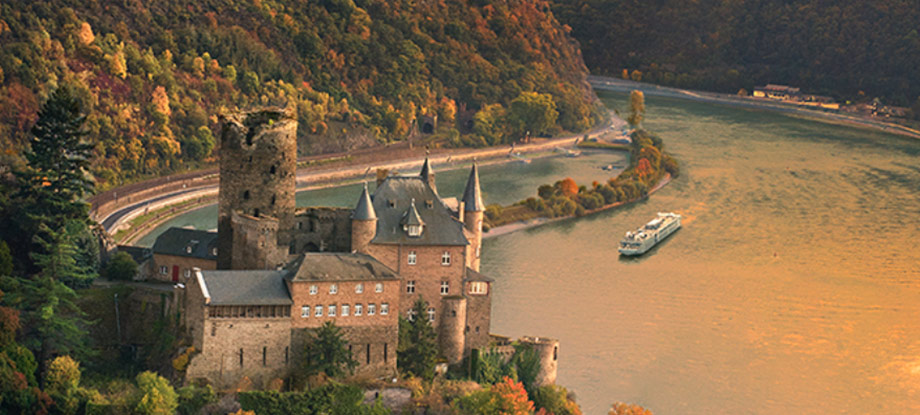
VIKING CRUISES – SAVE TED’S VIKING WEBSITE TO YOUR FAVS FOR HIS WHITE GLOVE TREATMENT
Take A Hungarian Cooking Class and Tour of the Great Market
Ted’s insider tip: Take a cooking class with an included visit to the Central Market on a guided tour! Start in the morning with real Hungarian breakfast at the Central Market Hall followed by a tour of the Great Hall. Then attend a Hungarian Cooking Class in a centrally located school where you’ll be making a 3-course meal, learn about local cuisine, fun stories and have a great time. Then your lunch is your own fresh-cooked Hungarian meal.

Getting to the Central Market Hall
You can reach the Central market Hall using trams numbers 2, 47 and 49. Alternatively, you can also travel by metro (line 3-blue line) and get off at Kálvin tér station, then walk towards the Szabadság Bridge.
The market is just next to the imposing building of the University of Economics at the beginning of the bridge on the left side.
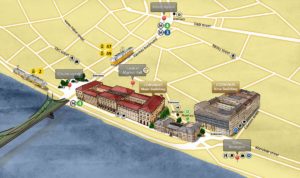
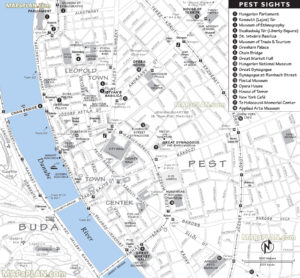
Opening hours:
Mondays: 6 am to 5 pm
Tuesday – Friday: 6 am to 6 pm
Saturdays: 6 am to 2 pm
Sundays: closed

ENTER TED’S VACATION GIVEAWAY!
Sign Up Here and Win a VACATION for two!
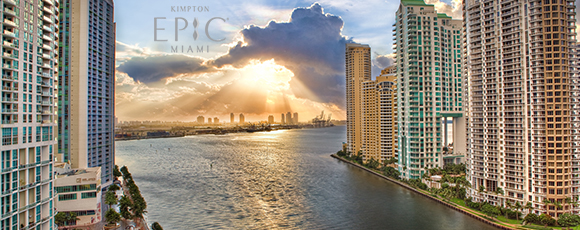


Acknowledgement to the website, Guide to Market Halls in Budapest, Hungary, for editorial and pictorial contributions.
*Restrictions apply.
